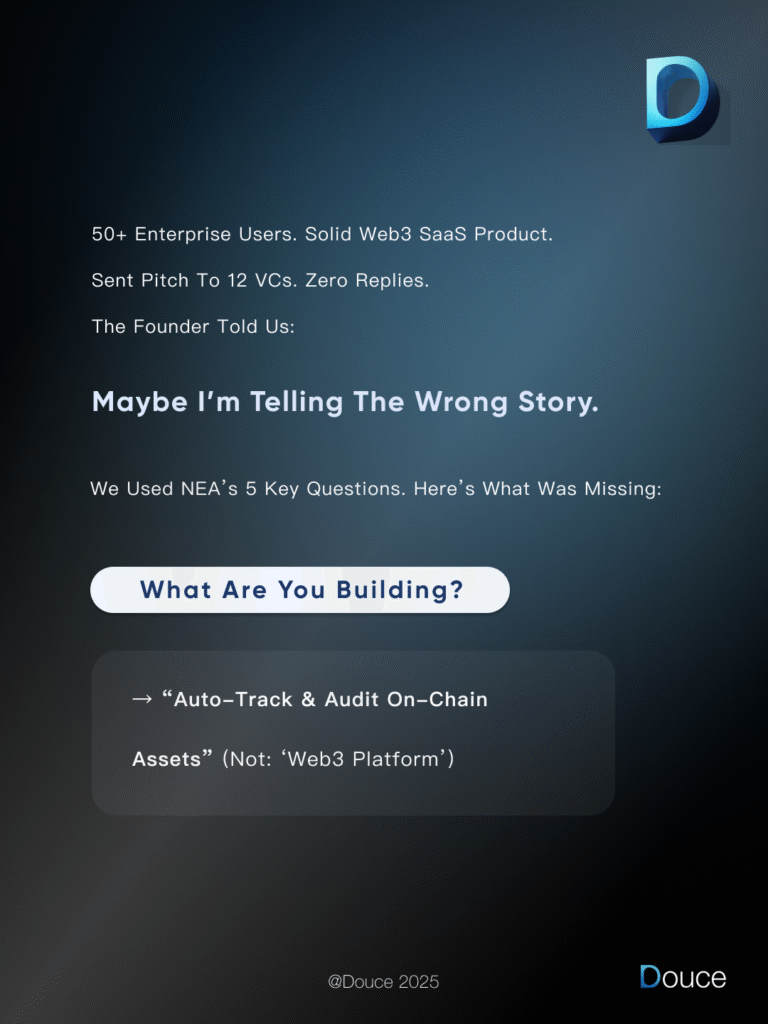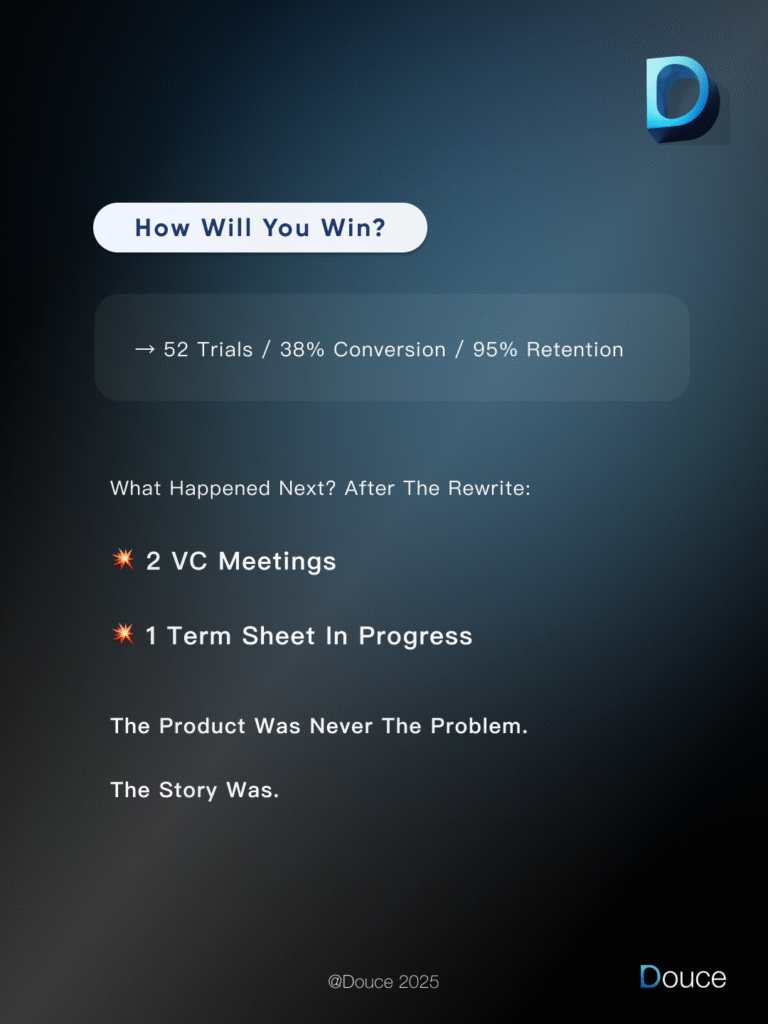And how one founder fixed it — without touching the product.
A Web3 SaaS founder came to us frustrated.
“We have 50+ enterprise users already testing the product,” he said.
“We’ve pitched 12 VCs. No replies. Not even a polite no.”
The product was solid.
The tech was sound.
The traction was real.
So why the silence?
🚨 The Problem Wasn’t the Product — It Was the Story.
We asked if he’d ever heard of NEA’s 5 Key Questions — a framework many top investors use to evaluate early-stage decks. He hadn’t.
Once we ran through them, the gaps were obvious:
1️⃣ What are you building?
❌ Original: “Enterprise-grade Web3 asset management platform”
✅ New: “We help companies track, reconcile, and audit all their on-chain assets — automatically.”
🧠 Takeaway: Jargon ≠ clarity. If your pitch needs Googling, you’ve already lost them.
2️⃣ Why you?
❌ Original: “We’ve been in the Web3 space for years.”
✅ New: Founder was formerly a Big Four audit consultant and led compliance architecture for an ICO.
🧠 Takeaway: Highlight founder-market fit. Show investors you’re built for this.
3️⃣ Why now?
❌ Original: Not addressed at all.
✅ New: Crypto accounting legislation is coming in 2026 — creating urgent demand for audit tools.
🧠 Takeaway: Timing matters. Make your product feel inevitable, not optional.
4️⃣ Who’s your team?
❌ Original: Just names and titles.
✅ New: Bios, backgrounds, and past startup failure — turned into a story of resilience and clarity.
🧠 Takeaway: People invest in people. Don’t just list resumes. Tell the mission.
5️⃣ How will you win?
❌ Original: “We aim to 3x in the next year.”
✅ New: 52 trial users → 38% conversion → 95% monthly retention
🧠 Takeaway: Real metrics > fluffy goals. Show proof of traction, not hope.
💥 What Happened Next?
Within 3 weeks of updating the pitch:
2 VCs reached out for meetings
1 term sheet is now in discussion
Nothing changed about the product.
Only the way the story was told.





